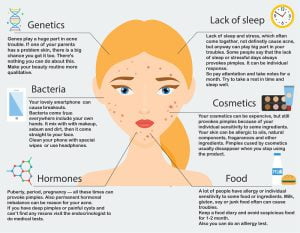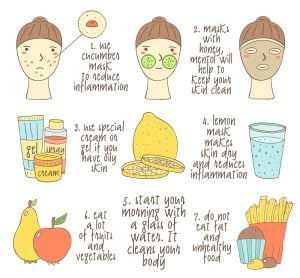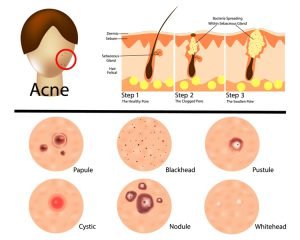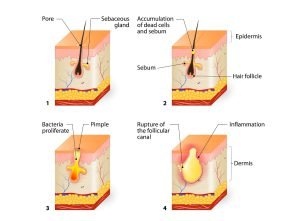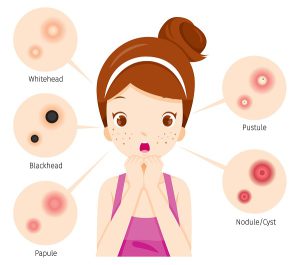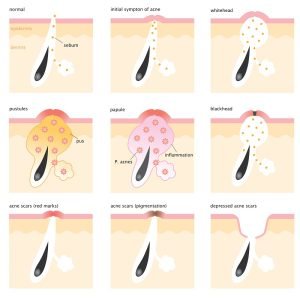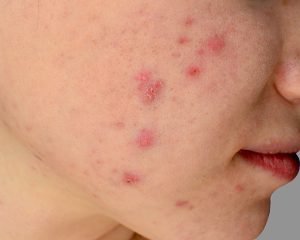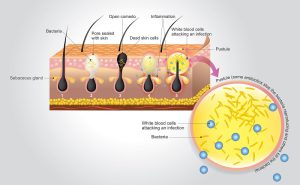Browsing: Acne Graphics
Comprehensive Information, Resources, and Support on Acne
The four main causes leading to acne include excess oil production, hair follicles clogged by oil and dead skin cells, bacterial growth and excess activity of a type of hormone. These conditions might be due to some hormonal changes in the body. Excess stress increases the production of stress hormone which leads to formation of acne. Pollution, use of wrong cosmetics, consumption of junk or unhealthy foods, etc also increase the chances of acne formation.
If you suffer from acne try some easy home remedies to get rid of them, such as cleaning mask, regular cleaning, dietary changes and apply oil-free cream. Several studies have shown that taking zinc orally helps reduce acne. Green tea has antimicrobial and antioxidant compounds which are helpful in reducing acne. Use of jojoba oil or tea-tree oil also reduces the redness and swelling around the pimples. Natural home remedies for acne are cheap, effective, and good for the skin and body.
Various types of acne are represented in the image. The following are common types of blemish associated with acne: whiteheads. blackheads. pustules, which are commonly called pimples. papules. cysts. nodules.
The formation of skin acne or pimple involves clogging of pores by sebum that promotes growth of certain bacteria (Propionibacterium acnes). This leads to redness and inflammation associated with pimples. In some cases, elevated androgen levels cause the oil glands under the skin to grow which produces more sebum. When excessive sebum breaks down cellular walls in the pores, it causes bacteria to grow. This also leads to the formation of acne.
Acne can form several types of skin blemish, each with a distinct appearance and symptoms. The types of blemish includes whiteheads, blackheads, pustules (commonly called pimples), papules, cysts and nodules.
The process of formation of various types of skin acne are shown in the above image. The glands produce an oily liquid called sebum. Sebum carries dead skin cells through the follicles to the surface of the skin. A small hair grows through the follicle out of the skin. Pimples appear when the follicles become blocked, and oil builds up under the skin.
Acne vulgaris is a long-term skin disease that occurs when hair follicles become clogged with dead skin cells and excess oil from the skin. It most often affects adolescents.
ADVERTISEMENT




